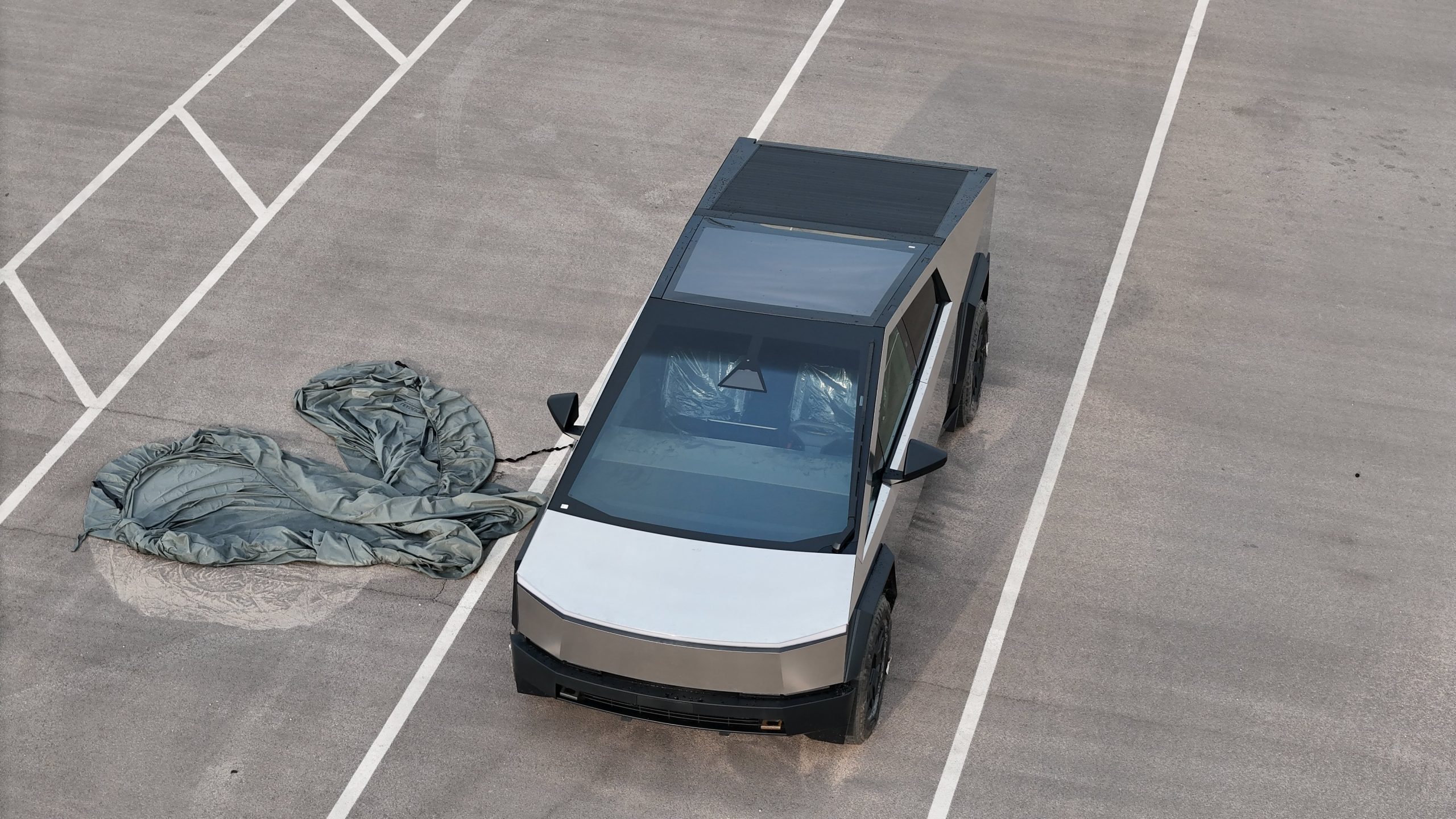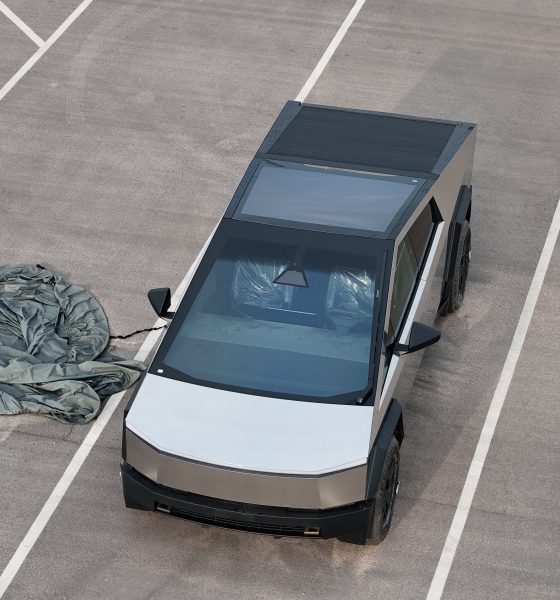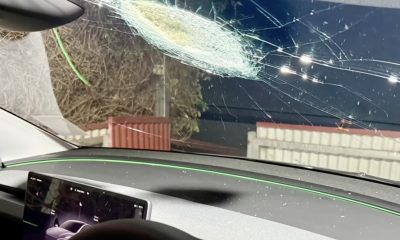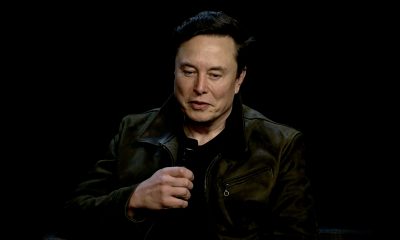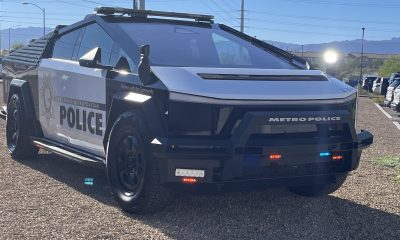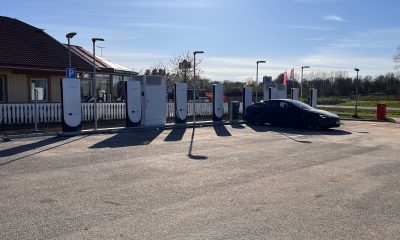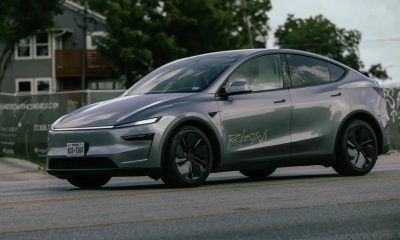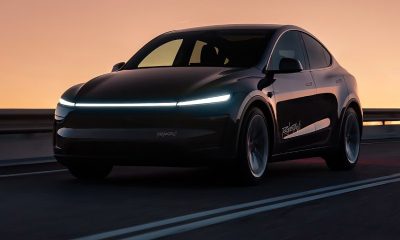Tesla Cybertruck units that are being called “manufacturing confirmation” builds are being seen on the Giga Texas property as the company is revamping the factory to full production after a stoppage to upgrade lines. These units show impeccable build quality, and they are the best Cybertruck builds we have seen to date.
With the Cybertruck heading toward initial deliveries, as Tesla still plans to start with them before the end of the year, things are getting interesting on the Giga Texas property.
Earlier today, Giga Texas observer and drone operator Joe Tegtmeyer captured images of two “manufacturing confirmation” Cybertrucks. Tegtmeyer referred to them as “master candidates.”
Giga Texas NEWS! All employees back at work today, training, final prep, test production of Model Y bodies & at least 2 Master Candidate Cybertrucks produced & imaged today outside! This wee will be to get everything back into operational status to resume full production by next… pic.twitter.com/zgXGzVWmnh
— Joe Tegtmeyer ? ?? (@JoeTegtmeyer) September 25, 2023
These manufacturing confirmation Cybertrucks are the first few units to roll off of the new and improved production lines at the Texas Factory, which were shut down for several weeks to make room for improvements. Tesla told us during the Q2 Earnings Call that it would need to shut down each of its factories to upgrade production lines during Q3, which could contribute to a slightly lower quarter than expected.
These Cybertruck units are a validation of those new production lines and will not be delivery candidates, according to Greggertruck, a Cybertruck program insider. These will make way for the next Cybertruck production units, which will be known as “Series 9” and could be the first handed over to customers.
The insider told us that the Series 8 Cybertruck units could be the ones that end up in showrooms as Tesla will begin to get those into locations across the United States, likely in the near future.
As for Giga Texas, production should be back up to normal rates by next week, as the stoppage will take a few days to recover from. Tesla is building Model Y units at the factory, as well as these early Cybertruck units.
Elon Musk revealed this past weekend that Tesla has a “Performance” trim of the Cybertruck, giving us a hint at what configurations of the all-electric pickup might be available at first deliveries.
Please email me with questions and comments at joey@teslarati.com. I’d love to chat! You can also reach me on Twitter @KlenderJoey, or if you have news tips, you can email us at tips@teslarati.com.
News
Tesla Model Y on FSD saves couple after encountering King of edge cases
Experts have noted that if confirmed, this could be the world’s first recorded meteorite collision involving a Tesla.
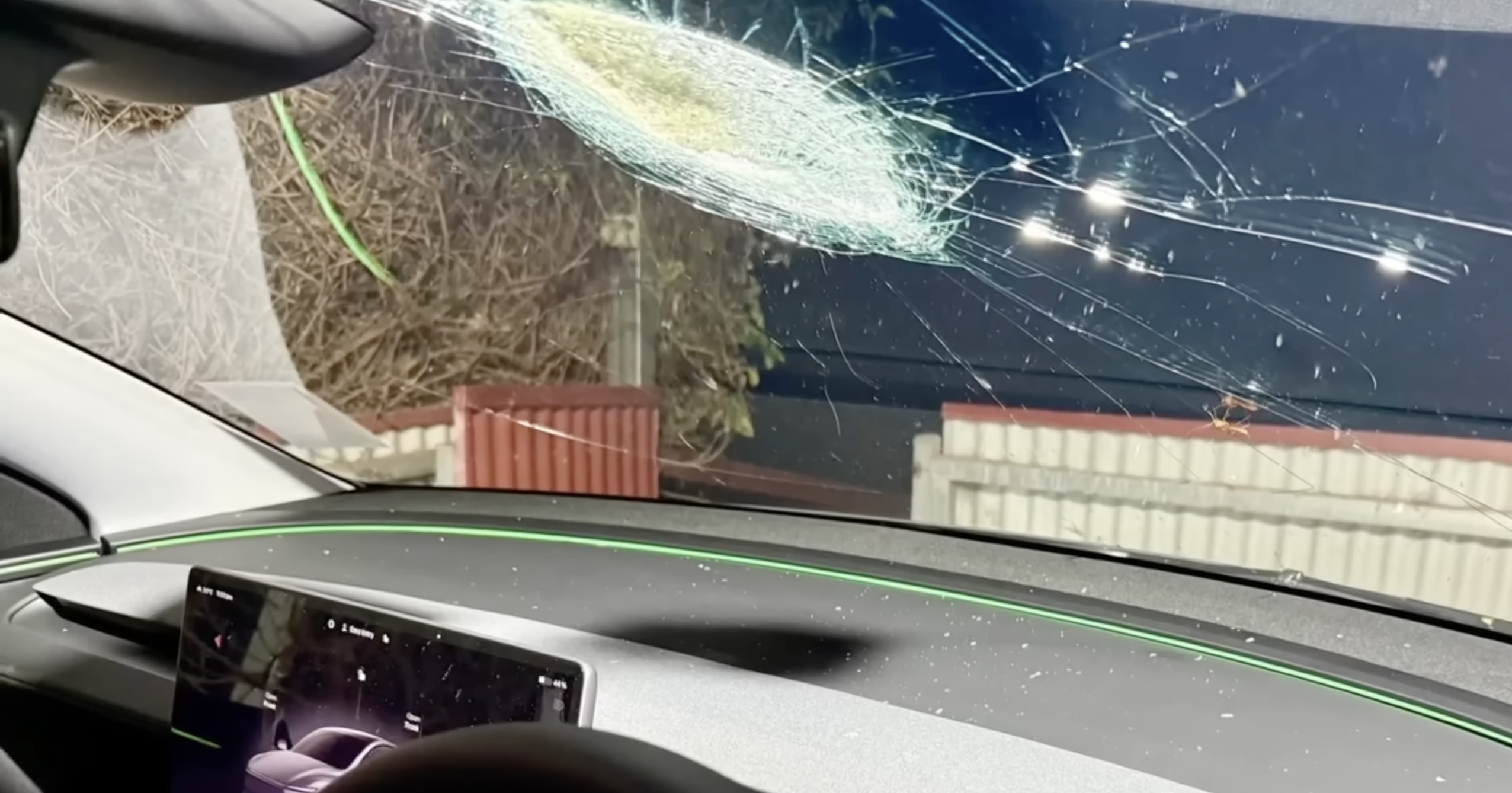
A South Australian Tesla driver is thanking his Model Y’s Full Self-Driving system after a mysterious object, possibly a meteorite, slammed into his car’s windshield while it had FSD engaged.
The impact sent hot glass fragments flying through the cabin as the vehicle continued driving without human input through the darkness. Experts have noted that if confirmed, this could be the world’s first recorded meteorite collision involving a Tesla.
The Tesla owner was enjoying a quiet drive home when they hit the king of edge cases
Veterinarian Dr. Andrew Melville-Smith and his wife were traveling north on Augusta Highway on the night of October 19 when a sudden blast struck their newly delivered Model Y. At the time, it was clear, pitch black night, and Dr. Melville-Smith and his wife were just listening to a podcast while FSD was operating the vehicle, as noted in a Yahoo News report.
Suddenly, something hit the Tesla’s windshield. “Then there was, (what) I can only describe as a very, very violent explosion. The whole inside of the car was literally blasted with glass fragments. It was full of white smoke, and it smelled like the car was on fire,” Dr. Melville-Smith stated.
The vet stated that he and his wife were stunned for a good 10 seconds, and for a bit, he and his wife thought they had crashed. Images of the crash’s aftermath showed a massive crack on the Tesla’s windshield, which Dr. Melville-Smith noted was hot to the touch. The object that hit the Tesla’s windshield was so hot that part of the vehicle’s windshield was partly melted.
FSD kept driving despite the possible meteorite strike
Thankfully, the Tesla was operating with its FSD (Supervised) system engaged at the time. Thus, despite the vehicle being hit by what might be a literal meteorite, and despite Dr. Melville-Smith and his wife being stunned because of the impact, their Tesla just kept driving steadily.
“I thought we’d had an accident, but then I looked at the screen and went ‘Oh, we’re still driving. We were moving around, so it obviously thought we were paying attention, and it was happy to keep driving to Port Augusta. After we pulled over, we saw the big crater in the windscreen,” the vet said.
The South Australian Museum is now examining the case, with geologist Dr. Kieran Meaney stating the scorched glass and heat damage do suggest a potential meteorite strike. “The little detail that’s really selling it for me at the moment is that whatever it was that hit the windscreen seems to have been very hot,” Meaney explained. However, the object has yet to be recovered.
Check out a video of the remarkable edge case below.
News
“Foundation:” Elon Musk wants to send a record of Grokipedia to space
The idea sounds outlandish, though it is also something that is in character for the CEO.
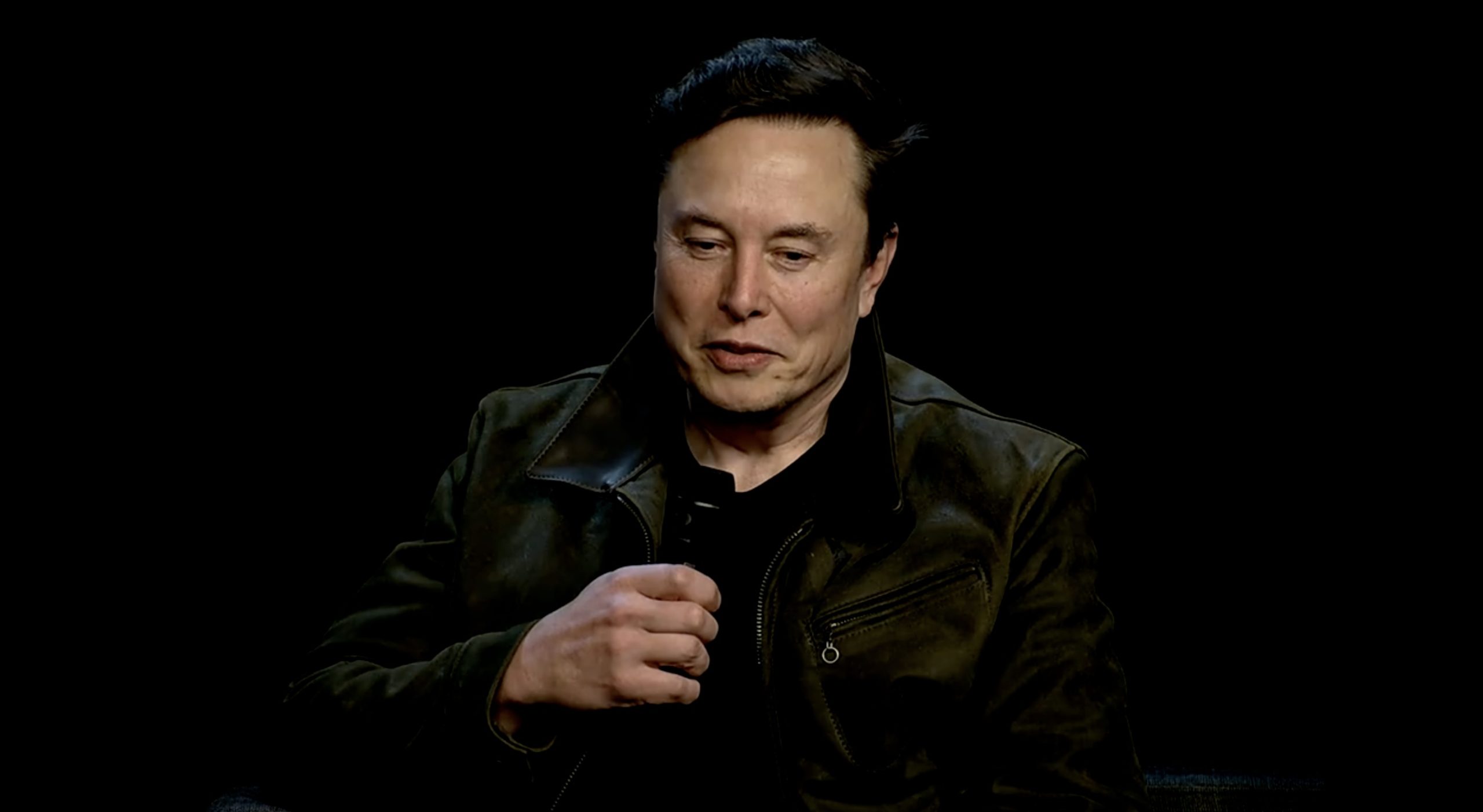
Elon Musk has announced one of his latest initiatives, and it is every bit as sci-fi as it is surprisingly grounded. In a post on X, Musk stated that Grokipedia, xAI’s new open-source encyclopedia, will be etched into stable oxide and launched into space.
The idea sounds outlandish, though it is also something that is in character for the CEO.
Preserving human knowledge among the stars
Musk posted his plan following the launch of Grokipedia’s V0.1’s iteration. The CEO congratulated the xAI team for the online encyclopedia’s launch, though he also stated that the goal for Grokipedia is to create an open-source collection of knowledge. This would then be distributed to the cosmos.
“Nice work by the xAI team on Grokipedia! The goal here is to create an open source, comprehensive collection of all knowledge. Then place copies of that etched in a stable oxide in orbit, the Moon, and Mars to preserve it for the future. Foundation,” Musk wrote in his post.
While seemingly outlandish, this is not the first time that a record of human knowledge of sorts was sent out to space. In 1977, the Voyager Golden Record was launched aboard NASA’s Voyager 1 and 2 spacecraft. The record contains sounds and images that ere aggregated to portray the diversity of the Earth’s culture. Of course, Musk’s plan with Grokipedia, is infinitely more ambitious.
Grokipedia and AI neutrality
Musk launched Grokipedia as an AI-driven alternative to Wikipedia, designed to eliminate the human biases that could affect conventional online knowledge platforms. The system is powered by xAI’s Grok, which scrape and summarize information from across the internet, offering balanced and nuanced coverage of topics ranging from science and technology to culture and politics.
Unlike Wikipedia’s human-edited format, Grokipedia would be able to evolve through machine learning, reading vastly more material than any editorial team could. Early testers, including Wikipedia co-founder Larry Sanger, praised its initial version as “very OK” and potentially more neutral than Wikipedia. Musk agreed, stating that even in its V0.1 form, Grokipedia is “already better than Wikipedia.”
News
Tesla Cybertrucks to save Las Vegas police thousands in fuel and maintenance
Sheriff Kevin McMahill unveiled the new vehicles on Monday, describing them as “the next evolution to keep our community safer than it’s ever been.”
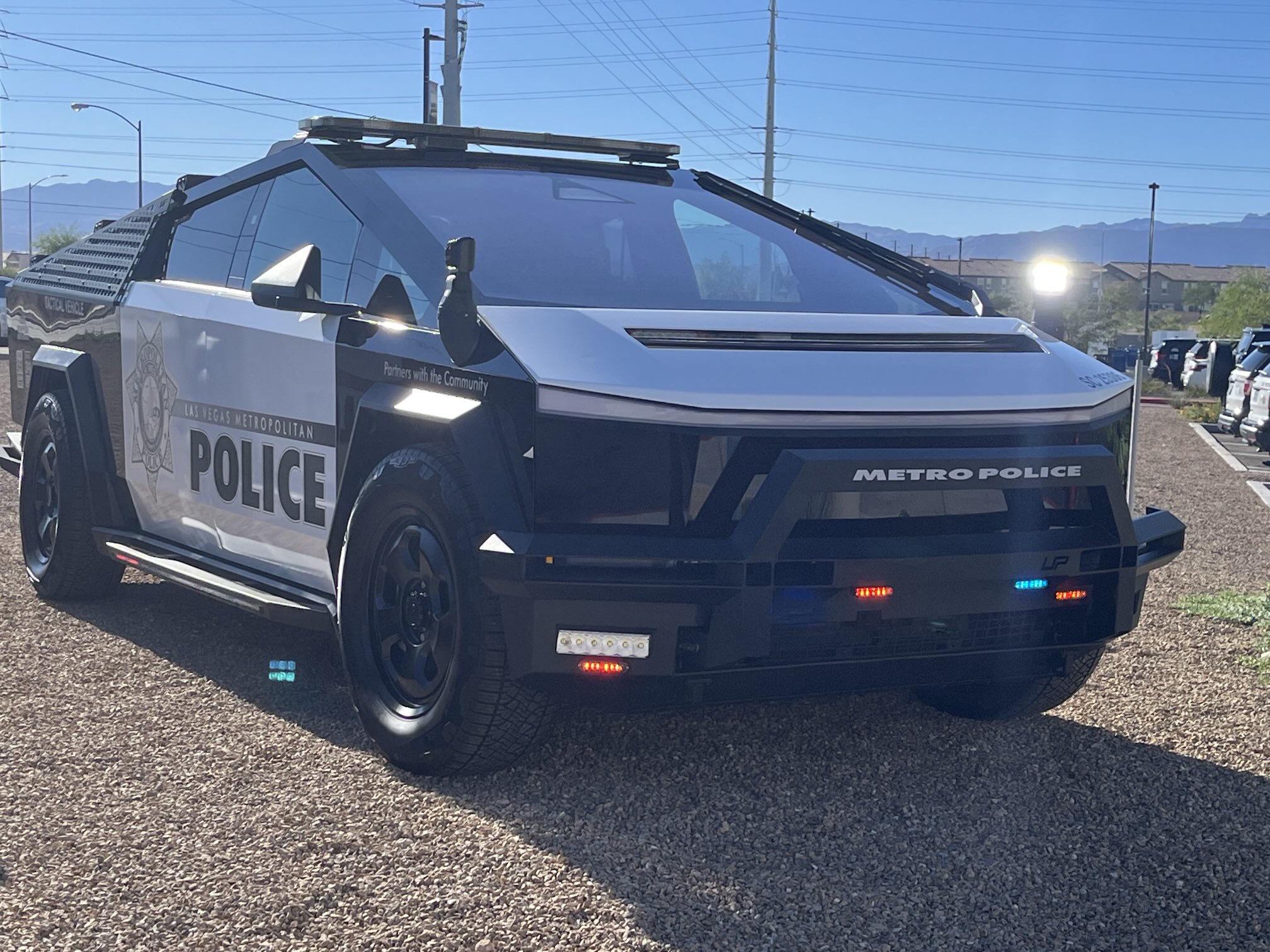
The Las Vegas Metropolitan Police Department has officially unveiled its fleet of Tesla Cybertrucks as part of its push toward a more advanced, cost-efficient, and sustainable patrol system.
Sheriff Kevin McMahill unveiled the new vehicles on Monday, describing them as “the next evolution to keep our community safer than it’s ever been.” The trucks are expected to begin service across all area commands within two weeks.
High-tech patrol fleet
Each UP.FIT-modified Cybertruck has been customized with ladders, shields, and less-lethal equipment to support law enforcement operations. The vehicles will connect to a live drone response hub capable of facial recognition and gunshot detection, enabling drones to launch automatically when alerts trigger. The system streams real-time footage directly to responding officers, enhancing both speed and situational awareness during emergencies.
Officers have already completed training with the new fleet and offered feedback on its performance, according to Fox 5 Vegas. Sheriff McMahill noted that the trucks, along with robot dogs and SWAT vehicles, represent a coordinated effort to combine human expertise with emerging technologies. The Cybertruck rollout was made possible through a donation from the Horowitz family.
Cybertrucks’ major savings
The department’s ten UP.FIT patrol Cybertrucks are among the most American-made law enforcement vehicles available, featuring roughly twice the domestic parts content of comparable Ford and Chevrolet patrol trucks. Beyond their build quality, the electric fleet offers major cost benefits. Each Cybertruck is projected to save between $8,800 and $12,000 in annual fuel costs and roughly $3,540 in maintenance over a five-year service life.
With regenerative braking, factory ballistic-resistant doors, and no idling fuel burn, the Cybertruck platform provides higher uptime, lower total cost of ownership, and a quieter patrol experience, all while reducing the department’s carbon footprint. Sheriff McMahill confirmed each area command will receive one of the new patrol units.
-

 Elon Musk2 weeks ago
Elon Musk2 weeks agoSpaceX posts Starship booster feat that’s so nutty, it doesn’t even look real
-

 Elon Musk2 weeks ago
Elon Musk2 weeks agoTesla Full Self-Driving gets an offer to be insured for ‘almost free’
-

 News2 weeks ago
News2 weeks agoElon Musk confirms Tesla FSD V14.2 will see widespread rollout
-

 News2 weeks ago
News2 weeks agoTesla is adding an interesting feature to its centerscreen in a coming update
-

 News2 weeks ago
News2 weeks agoTesla launches new interior option for Model Y
-

 News2 weeks ago
News2 weeks agoTesla widens rollout of new Full Self-Driving suite to more owners
-

 Elon Musk2 weeks ago
Elon Musk2 weeks agoTesla CEO Elon Musk’s $1 trillion pay package hits first adversity from proxy firm
-

 News1 week ago
News1 week agoTesla might be doing away with a long-included feature with its vehicles

